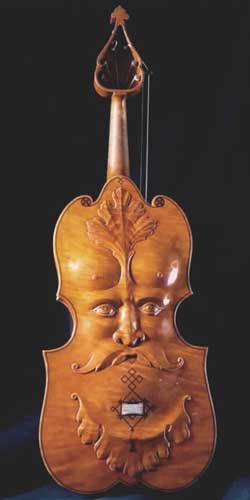HOW THE VIOLIN GOT STARTED: A BRIEF SUMMARY
The violin is one of the most recognizable instruments in the world, with a rich history and captivating sound. In this article, I will take a brief look at the origins of the violin and its evolution throughout history. I will explore the origins of the violin, the innovations made by various luthiers and the anatomy of the instrument. If you are new to the world of the violin, this article will give you all the information you need to get started. So let’s begin the journey of discovering the fascinating history of the violin. The violin, as we know it today, has evolved over centuries from earlier bowed stringed instruments. Here is a brief history of the origins of the violin and some of its early versions:
➤ Byzantine lira: the byzantine lira was a bowed stringed instrument popular in the Byzantine Empire during the Middle Ages. It had three or four strings and a pear-shaped body and was played either upright or horizontally.
➤ Medieval fiddle: the medieval fiddle was a popular stringed instrument in Europe during the Middle Ages. It had three or four strings and a round or pear-shaped body and was played with a bow made of wood or horn.
➤ Vielle: the vielle was a bowed stringed instrument popular in Europe during the Middle Ages and Renaissance. It had three or four strings and a box-shaped body and was played with a bow made of wood or bone.
➤ Rebec: the rebec was a popular stringed instrument in Europe during the Middle Ages and Renaissance. It had three strings and a pear-shaped body and was played with a bow made of wood or bone.
➤ Viol: the viol was a bowed stringed instrument popular in Europe during the Renaissance and Baroque periods. It had six or seven strings and a deep, rounded body, and was played with a bow made of wood or whalebone.
➤ Violin: the modern violin originated in Italy in the early 16th century. It had four strings and a narrow, curved body and was played with a bow made of wood or horsehair. The violin quickly became popular throughout Europe, becoming the protagonist of orchestral and chamber music.
Over time, the violin continued to evolve and improve, with changes in the shape of the body, the materials used and the design of the bow. Today, the violin is one of the most popular and widely recognized instruments in the world.
The first known painting of potentially a violin dates from around 1505 and is called Madonna of the Orange Tree by Gaudenzio Ferrari; it shows a group of angels playing various musical instruments, including what appears to be a small bowed instrument, which some have suggested was a precursor to the violin. However, this instrument is not clearly depicted and could also be interpreted as a rebec or similar instrument. So, while there is some controversy as to whether or not this painting shows a precursor to the violin, it is generally accepted that the first clear depiction of the violin in art came later, in the early 16th century.
The evolution of the violin
The development of the violin was a gradual process over several centuries, during which various forms of the instrument were experimented with and refined. Here are some examples of early variations of the violin:
➤ Viola da braccio: this was the earliest form of the violin, made in Italy in the early 16th century. It had four strings, a flat back and was played on the arm (da braccio).
➤ Violino piccolo: this was a smaller version of the violin that was popular in the Baroque era. It had a shorter neck and a higher pitch than a standard violin and was often used for solo or chamber music.
➤ Viola d’amore: The viola d’amore was a bowed stringed instrument popular in the Baroque era. It had seven or more strings and its sound was enhanced by a set of sympathetic strings that vibrated along with the main strings.
➤ A pochette or ‘kit’ fiddle: is a small, portable fiddle that was popular in the 18th and 19th centuries. Designed to be carried in a pocket or small bag, it was often used by dance masters who played it to accompany their students during lessons or dances. The pochette is typically smaller than a standard violin, with a body length of about 20 cm (8 inches) and a shorter fingerboard. It has three or four strings and is often played with a simple bow made of wood and horsehair. The pochette produces a higher pitched sound than a full size violin and has a slightly nasal quality. Although the pochette is not as widely used today as it once was, it is still played by some musicians for its unique sound and historical significance. It is also popular with reenactors and historical performers who specialize in music from the Baroque and Renaissance periods.
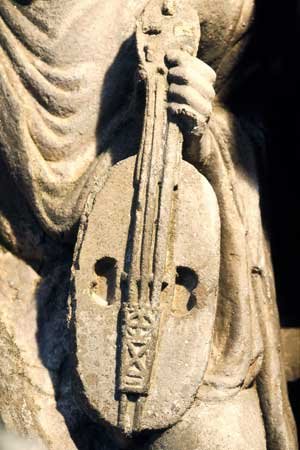

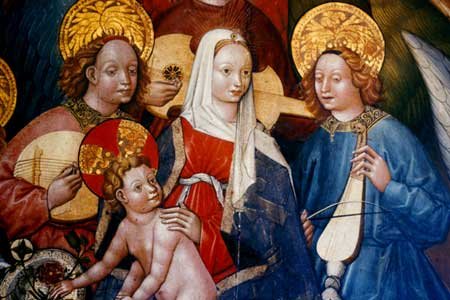
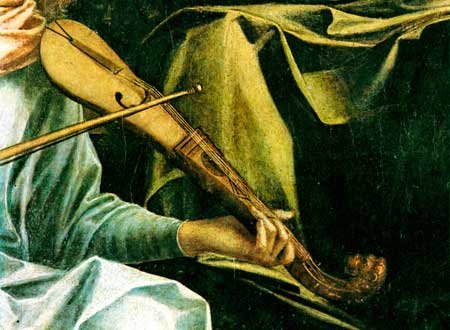
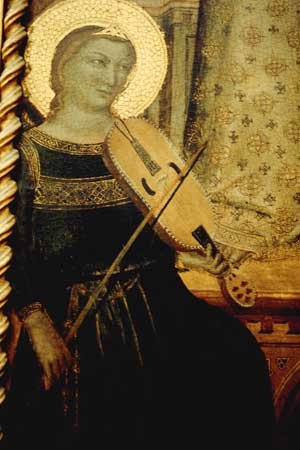
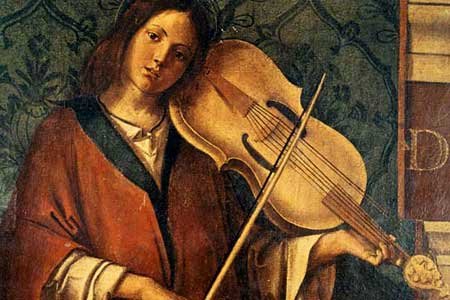
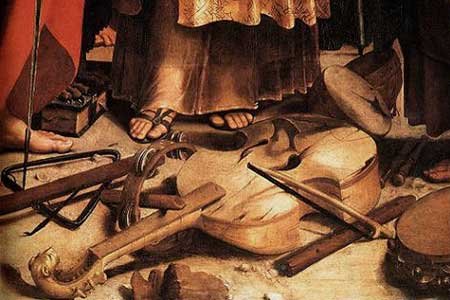
The modern violin
The development of the modern violin was a gradual process that took place over several centuries. Here are some important milestones in the evolution of the instrument:
➤ Early violins: the earliest violins, made in Italy in the early 16th century, had a flat back and four strings. They were played on the arm (da braccio) and were smaller and more nimble than earlier bowed stringed instruments.
➤ Cremonese makers: in the late 16th and early 17th centuries, a group of master violin makers emerged in Cremona, Italy, including Andrea Amati, Antonio Stradivari and Giuseppe Guarneri. These makers refined the design of the violin and developed new techniques for carving and shaping the wood to produce a more resonant and powerful sound.
➤ Golden age: the 17th and 18th centuries are often referred to as the ‘Golden Age’ of violin making, during which time Cremonese makers produced some of the finest violins ever made, including Stradivari’s ‘Golden Period’ violins and Guarneri’s del Gesù violins.
➤ Modern design: in the late 18th and early 19th centuries, changes were made to the design of the violin to make it more playable and responsive. These changes included a more angled neck, a longer fingerboard and a flatter bridge. The modern chinrest was also introduced during this period.
➤ 20th century innovations: in the 20th century, several innovations were made to the violin, including the use of synthetic materials for strings and tailpieces and the introduction of electric violins, which allowed for greater amplification and manipulation of the sound.
Differences between Classical and Baroque violins
There are several key differences between the Classical and Baroque violin:
➤ Shape: Baroque violins have a slightly different shape than Classical violins. They typically have a flatter arch on the top and back, a shallower neck angle, and a shorter fingerboard. The f-holes on Baroque violins are also often more curved and wider than those on Classical violins.
➤ Strings: Baroque violins are typically strung with gut strings, while Classical violins are often strung with synthetic or steel strings. Gut strings have a warmer, more resonant sound than synthetic or steel strings, but require more frequent tuning and can be more difficult to play.
➤ Bow: Baroque bows are shorter and lighter than Classical bows, with a convex shape and smaller frog. They are often held differently than Classical bows, with the hand positioned closer to the frog. This allows for a more flexible, nuanced sound that is well suited to Baroque music.
➤ Tuning: Baroque music is often played in a different tuning system than Classical music, known as historical tuning. This involves tuning the strings to different pitches than in modern tuning systems, which can affect the overall sound and timbre of the instrument.
In general, the main difference between the Baroque and Classical violin is in the approach to playing and interpretation. Baroque music is often characterized by a more ornate, improvisational style, while Classical music is typically more structured and formal. As a result, the techniques used to play each style of music may vary slightly, with different emphasis on phrasing, dynamics and expression.
Frequently Asked Questions
-
The violin, a stringed instrument played with a bow, is believed to have originated in Northern Italy in the early 16th century. Its ancestor was the medieval fiddle and it evolved from the viol family of instruments.
-
There is no single inventor of the violin, but the development of the modern violin is attributed to Andrea Amati, an Italian luthier who made the first known modern violin in the 16th century.
-
The main difference between a violin and a viola is the shape and size of the instrument, as well as the tuning. A violin has four strings and is usually tuned in fifths, while a viol has six strings and is often tuned in fourths and thirds.
-
Some famous violin makers include Andrea Amati, Antonio Stradivari and Guarneri del Gesù, all of whom worked in Cremona, Italy during the 16th and 17th centuries.
-
A cello is a larger instrument than a violin and is tuned an octave lower. It is played while seated and its strings are typically thicker than those of a violin.
-
A violin is handcrafted using traditional woodworking techniques. It is constructed from several parts, including the body, neck and fingerboard. The top and back of the body are carved from a single piece of wood, while the sides are made from a different type of wood that is bent into shape.
-
The Amati violin is important because it is the first known modern violin and also because the Amati family was very influential in the development of the modern violin.
-
The bow is an essential part of playing the violin. It is used to strike the strings and produce the sound. The bow consists of a stick and horsehair that is pulled tight to create a tension that causes the hair to bounce back and forth along the strings.
-
An electric violin is similar in shape and design to a traditional violin, but it contains electronic components that allow it to be amplified and produces a louder sound. It is commonly used in rock and pop music.
-
The origin of the word ‘violin’ is uncertain, but it is thought to come from the Italian ‘violino’, which means ‘little viola’.
-
The violin has evolved significantly over time, with changes in size, design and sound production. Some of the most significant changes include the addition of the chin rest, the development of the bass bar and the use of synthetic materials in place of traditional materials such as gut strings.
Read more articles
Quick video tips
““The first known painting of a violin dates from around 1505 and is called “Madonna of the Orange Tree” by Gaudenzio Ferrari.””
